Closed
Last
1,361.77
+9.24
(+0.68%)
Last
23 Jan 2025 02:09:44
1,361.77
+9.24
(+0.68%)
Value (M.Baht)
43,955.35
Volume ('000 Shares)
7,839,417
Volume ('000 Shares)
7,839,417
Value (M.Baht)
43,955.35



ROYAL ORCHID HOTEL (THAILAND) PUBLIC COMPANY LIMITED
ROYAL ORCHID HOTEL (THAILAND) PUBLIC COMPANY LIMITED
ROH
Stock
CF
1.95
+0.07 (+3.72%)
Status :
Closed
Last Update :
23 Jan 2025 02:09:29
High
1.95
Low
1.84
Volume (Shares)
10,900
Value ('000 Baht)
21.17
Status :
Closed
Last Update :
23 Jan 2025 02:09:29
High
1.95
Low
1.84
Volume (Shares) 10,900
Value ('000 Baht) 21.17
Financial Statements Analysis in various aspects
1. Sales Quality
| Financial data | Unit |
Y/E 2021
31 Dec 2021
|
Y/E 2022
31 Dec 2022
|
Y/E 2023
31 Dec 2023
|
9M/ 2023
30 Sep 2023
|
9M/ 2024
30 Sep 2024
|
|---|---|---|---|---|---|---|
1.1 Sales Quality
| ||||||
Two aspects of the revenue from the operations must be considered a) consistency of that revenue overtime or properness of that growth b) how collectible of that revenue and whether the collection period is appropriate with respect to its business | ||||||
| Revenue from Operations | M. Baht | 62.26 | 397.03 | 809.26 | 524.65 | 658.07 |
| change rate | % | -74.15 | 537.68 | 103.83 | 147.89 | 25.43 |
| Collection period* | Days | 69.93 | 44.96 | 64.57 | 15.87 | 116.68 |
| increase (decrease) | Days | 57.15 | -24.97 | 19.61 | -23.52 | 100.81 |
1.2 Ability to Generate Cash Flow
| ||||||
Consider the performance of the company which shall reflect its ability to generate cash and in line with its performance. | ||||||
| Net Profit (Loss) For The Period | M. Baht | -213.44 | -123.01 | -47.74 | -57.30 | -44.40 |
| Net Cash From (Used In) Operating Activities | M. Baht | -189.98 | 36.46 | 229.68 | 136.94 | 154.53 |
2. Profitability
| Financial data | Unit |
Y/E 2021
31 Dec 2021
|
Y/E 2022
31 Dec 2022
|
Y/E 2023
31 Dec 2023
|
9M/ 2023
30 Sep 2023
|
9M/ 2024
30 Sep 2024
|
|---|---|---|---|---|---|---|
2.1 Gross Profit Margin
| ||||||
Profitability of the company can be assessed using various margins.
| ||||||
| Revenue from Operations | M. Baht | 62.26 | 397.03 | 809.26 | 524.65 | 658.07 |
| change rate | % | -74.15 | 537.68 | 103.83 | 147.89 | 25.43 |
| Cost of Goods Sold | M. Baht | 159.40 | 237.30 | 339.41 | 235.56 | 262.87 |
| change rate | % | -32.82 | 48.88 | 43.03 | 45.51 | 11.59 |
| Gross Profit Margin before Depreciation and Amortization | % | -30.78 | 59.68 | 68.11 | 66.66 | 69.35 |
2.2 Other Profit Margins
| ||||||
Considering whether changes in the company's net profit margin are significant and backed by reasonable justifications.
| ||||||
| Operating Profit Margin before Depreciation and Amortization | % | -281.29 | -14.62 | 10.85 | 6.44 | 9.09 |
| Earnings before Interest, Tax, Depreciation and Amortization (EBITDA) Margin | % | -4.45 | 41.15 | 38.10 | 37.95 | 35.42 |
| Net Profit Margin | % | -93.91 | -15.91 | -4.10 | -7.24 | -4.79 |
2.3 Profit from Business Operations or Extraordinary Transactions
| ||||||
Analyze the company's net profit (loss) to identify whether it is from business operations or from extraordinary items. | ||||||
| Other Gains (Losses) | M. Baht | 2.94 | 23.03 | 0.28 | 0.18 | 0.00 |
| Net Profit (Loss) For The Period | M. Baht | -213.44 | -123.01 | -47.74 | -57.30 | -44.40 |
3. Cash Cycle
| Financial data | Unit |
Y/E 2021
31 Dec 2021
|
Y/E 2022
31 Dec 2022
|
Y/E 2023
31 Dec 2023
|
9M/ 2023
30 Sep 2023
|
9M/ 2024
30 Sep 2024
|
|---|---|---|---|---|---|---|
3.1 Cash Cycle
| ||||||
| ||||||
| Cash Cycle* | Days | -283.73 | -270.42 | -159.77 | -199.61 | -71.03 |
| increase (decrease) | Days | -154.69 | 13.31 | 110.65 | 73.37 | 128.58 |
3.2 Collection Period + Inventory Period - Account Paymant Period
| ||||||
Consider the policies related to inventory management and the credit terms applicable to accounts payable and accounts receivable are reasonable.
| ||||||
| Collection Period* | Days | 69.93 | 44.96 | 64.57 | 15.87 | 116.68 |
| increase (decrease) | Days | 57.15 | -24.97 | 19.61 | -23.52 | 100.81 |
| Inventory Period* | Days | 6.56 | 6.12 | 2.81 | 3.20 | 2.56 |
| increase (decrease) | Days | 2.67 | -0.44 | -3.31 | -0.37 | -0.64 |
| Account Payment Period* | Days | 360.22 | 321.50 | 227.15 | 218.68 | 190.27 |
| increase (decrease) | Days | 214.51 | -38.72 | -94.35 | -97.26 | -28.41 |
4. Asset Valuation
| Financial data | Unit |
Y/E 2021
31 Dec 2021
|
Y/E 2022
31 Dec 2022
|
Y/E 2023
31 Dec 2023
|
9M/ 2023
30 Sep 2023
|
9M/ 2024
30 Sep 2024
|
|---|---|---|---|---|---|---|
4.1 Asset Impairment
| ||||||
(Information presented : A plus sign (+) indicates impairment while a minus sign (-) indicates a reversal.)
| ||||||
| Proportion of Asset Impairment (from comprehensive income statement) to Total Assets | % | -36.52 | 0.00 | 0.00 | 0.00 | 0.00 |
| Proportion of Asset Impairment (from cash flow statement) to Total Assets | % | 0.00 | 0.00 | 0.00 | 0.00 | 0.00 |
4.2 Intangible Asset and Goodwill
| ||||||
Some of the company's investments, assets acquired or investment costs may be recorded as Intangible Asset or Goodwill. The company should review the suitability of such items and analyze how material changes in these items will impact the company's financial positions. | ||||||
| Net Intangible Asset | M. Baht | 3.51 | 2.26 | 1.93 | 2.06 | 2.21 |
| change rate | % | -27.24 | -35.52 | -14.81 | -19.09 | 7.34 |
| Goodwill | M. Baht | - | - | - | - | - |
| change rate | % | NM | NM | NM | NM | NM |
5. Debt Utilization
| Financial data | Unit |
Y/E 2021
31 Dec 2021
|
Y/E 2022
31 Dec 2022
|
Y/E 2023
31 Dec 2023
|
9M/ 2023
30 Sep 2023
|
9M/ 2024
30 Sep 2024
|
|---|---|---|---|---|---|---|
Consider the company's borrowings and debt-servicing ability. | ||||||
| Debt to Equity Ratio | Times | 1.87 | 2.01 | 2.13 | 2.11 | 2.23 |
| Total Interest Bearing Debt to EBITDA* | Times | -438.20 | 14.24 | 10.39 | 12.06 | 9.96 |
| Debt Service Coverage Ratio Based on Cash Flow from Operation* | Times | -265.97 | 5.39 | 38.06 | 31.84 | 45.85 |
| Interest Coverage Ratio Based on Cash Flow from Operation | Times | -265.97 | 5.39 | 38.06 | 29.90 | 39.24 |
Remark
- * In case of quarterly financial statements, financial metrics are to be annualized using a trailing twelve months approach.
- The financial statements analysis is based on the financial data derived from the publicly disclosed financial statements of listed companies. The calculations follow the formulas specified in the attached file, which may differ from the formulas used by other sources. For an effective analysis, investors are advised to study the calculation formulas and information of listed company in greater detail to support their investment decision-making.
